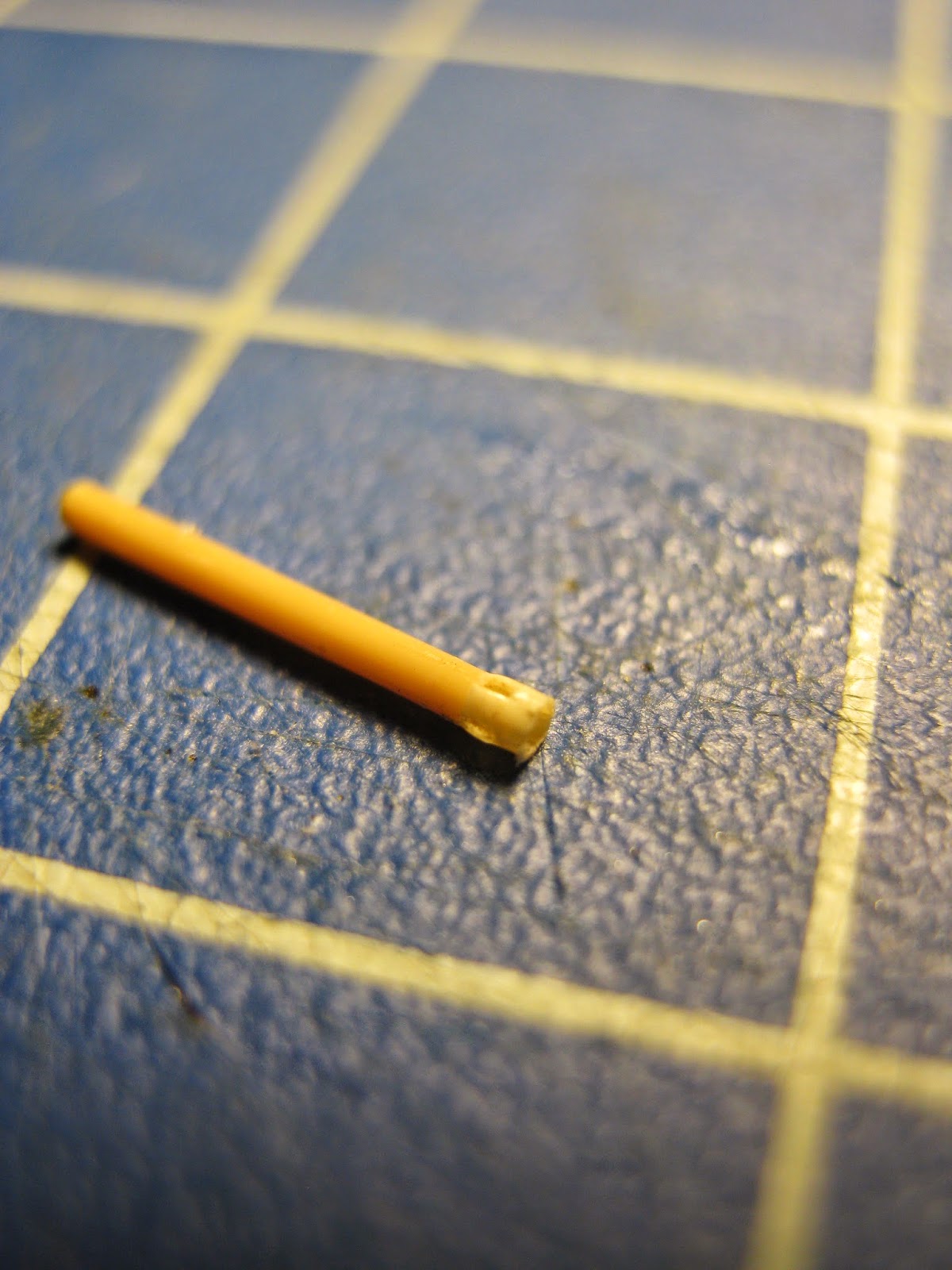Model - check. Glue - check. Forceps - check.
I went through hell to make these hooks. Now I enter a new hell - gluing them on. I lose all but six of my precious hooks in the first round of gluing. The glue evaporates while I am conveying the parts to the model in the forceps. Or, there is too much glue and the vapor attacks the hooks so that they open up and go all soft. I was close to tears yesterday. I accept counsel to the effect that I should not give up LOL. I make more hooks and have another go. I learn. I learn that one must use a glue that has intermediate viscosity - my Mr Hobby Mr Cement is slightly viscous, in between old-style glue and modern liquid - to glue one foot at a time. Not both at once. Once the hook is attached by one foot with Mr Hobby, the other foot can be glued with my normal cement (Tamiya Extra Thin Cement).
To attach tiny little hooks made from sprue: do them one foot at a time.
These hooks are not quite a disaster but close to. I know they are a little big, and a little thick, not square and not consistent, a bare pass, but by now I have reached a special state of acceptance. By the time I come to glue the last ones on the front I'm almost on top of the process but next time I'm going to have to spend more time making those hooks. Live and learn. Into every model a little rain must fall.
A few more pieces go on then it's time to set up for painting! So I set up a *spray booth* i.e. a cardboard box.
I try out my brand new Aztek A470 airbrush (with just thinners). The fucking thing doesn't work, at all. Yes, I followed the instructions. I think here is probably a good place to mention that the special Aztek connector I bought to use this expensive professional tool with canned propellant also does not work. It is not airtight. The hose screws into a metal ferrule which is fitted to the plastic body of the valve with just splines so it pops out when I try to tighten the connection by hand. Unbelievable. Along the way I've been happy to mention all sorts of good products that I use. Aztek, you need not apply for sponsorship of my blog; I just became an Iwata man.
So I pull out my old trusty, a basic model Revell/Badger airbrush that thirty years ago cost $15 and now costs about $40 and which has served me well for all that time. These basic airbrush kits are actually pretty good value although you cannot do anything fancy with them, only basic coverage. The poor old thing works briefly then packs it in. I'll soak it in thinners overnight; maybe it's just blocked.
But this is a delay, not a setback. Stay calm Nath. While I am waiting for the universe to send a new airbrush down my chute I suppose I can work on the accessories, damnit.

































